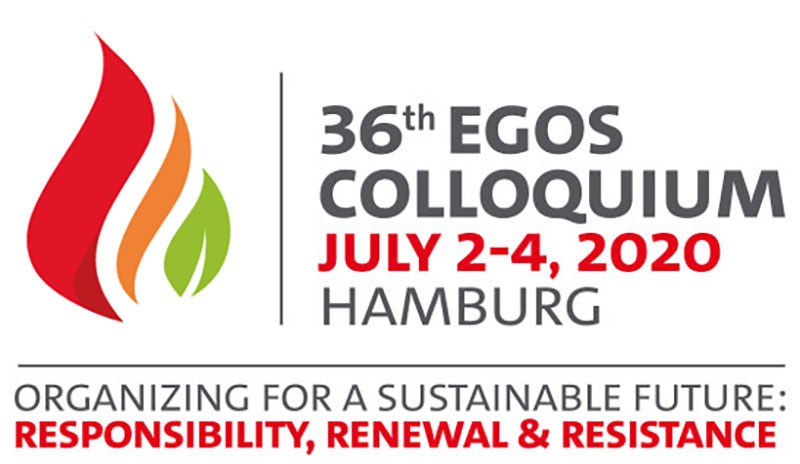Sub-theme 38: Organizing for the Future through Practices of Interorganizational Collaboration
Call for Papers
As actors seek to organize for the future, they increasingly reach out to potential partners beyond their organizational
boundaries or form new, distributed forms of organizing. Some of these efforts aim to address grand challenges or meta-problems
(Hardy et al., 2006) with complex ramifications that affect a broad range of stakeholders, such as sustainable development,
energy, water, or universal access to education. Other collaborations are driven by the opportunities that new digital technologies
and open forms of innovation offer to develop new products and services (Sydow et al., 2012). These forms of organizing across
boundaries create ‘collaborative advantage’ (Huxham & Vangen, 2005) by bringing together knowledge, actors, and various
forms of technological and financial resources to accomplish a goal that would not be achievable from the perspective of a
single organization.
However, accomplishing collaboration across organizational boundaries is not easy. It
involves different kinds of actors from individual contributors to companies, third-party developers and communities as partners.
Interorganizational boundaries may coincide with differences in understanding and doing that challenge cross-boundary integration
(Carlile, 2002). Collaborations are often open-ended and ever evolving (Garud et al., 2008) with fluid and temporary participation
(Dobusch et al., 2019; Majchrzak et al., 2018). For novel, complex projects external collaboration may be necessary to even
define which resources might be needed, making internal strategizing and collaboration closely linked (Deken et al., 2018).
Building on the previous four rounds of this sub-theme, we aim to investigate how actors address collaboration
challenges as they organize for the future. We seek to bring together scholars who take a process and practice lens to study
how collaboration emerges, develops, and changes over time. Acknowledging that collaboration is fluid rather than stable,
we seek to address questions about forms of multivocality and distributed experimentation in bringing together diverse stakeholders
(Ferraro et al., 2015).
Questions that may be addressed include, but are not limited to, the following:
How do actors create momentum and access resources for collaboration?
How are interorganizational practices initiated, maintained, negotiated and transformed over time?
How do intra-organizational practices and interorganizational practices interact?
What role does technology play in the design and emergence of interorganizational practices?
How are activities in interorganizational collaborations coordinated and governed between organizations, in particular if they involve actors from diverse settings with different time horizons, logics or forms of accountability such as start-up firms, government bodies, multinationals and NGOs?
How can we theorize the role of institutional and geographical distance in such collaboration?
References
- Carlile, P.R. (2002): “A Pragmatic View of Knowledge and Boundaries: Boundary Objects in New Product Development.” Organization Science, 13 (4), 442–455.
- Deken, F., Berends, H., Lauche, K., & Gemser, G. (2018): “Strategizing and the Initiation of Interorganizational Collaboration through Prospective Resourcing.” Academy of Management Journal, 61 (5), 1920–1950.
- Dobusch, L., Dobusch, L., & Müller-Seitz, G. (2019): “Closing for the Benefit of Openness? The case of Wikimedia’s open strategy process.” Organization Studies, 40 (3), 343–370.
- Ferraro, F., Etzion, D., & Gehman, J. (2015): “Tackling Grand Challenges Pragmatically: Robust Action Revisited.” Organization Studies, 36 (3), 363–390.
- Garud, R., Jain, S., & Tuertscher, P. (2008): “Incomplete by Design and Designing for Incompleteness.” Organization Studies, 29 (3), 351–371.
- Hardy, C., Lawrence, T., & Phillips, N. (2006): “Swimming with sharks: Creating strategic change through multi-sector collaboration.” International Journal of Strategic Change Management, 1 (1/2), 96–112.
- Huxham, C., & Vangen, S. (2005): Managing to Collaborate: The Theory and Practice of Collaborative Advantage. London: Routledge.
- Majchrzak, A., Griffith, T.L., Reetz, D.K., & Alexy, O. (2018): “Catalyst Organizations as a New Organization Design for Innovation: The Case of Hyperloop Transportation Technologies.” Academy of Management Discoveries, 4 (4), 472–496.
- Sydow, J., Windeler, A., Schubert, C., & Möllering, G. (2012): “Organizing R&D Consortia for Path Creation and Extension: The Case of Semiconductor Manufacturing Technologies.” Organization Studies, 33 (7), 907–936.


